<<<BACK TO PART ONE
"Ramming Speed!"
Naval Battles of
the Ironclad Emperor of the Pacific, PART TWO
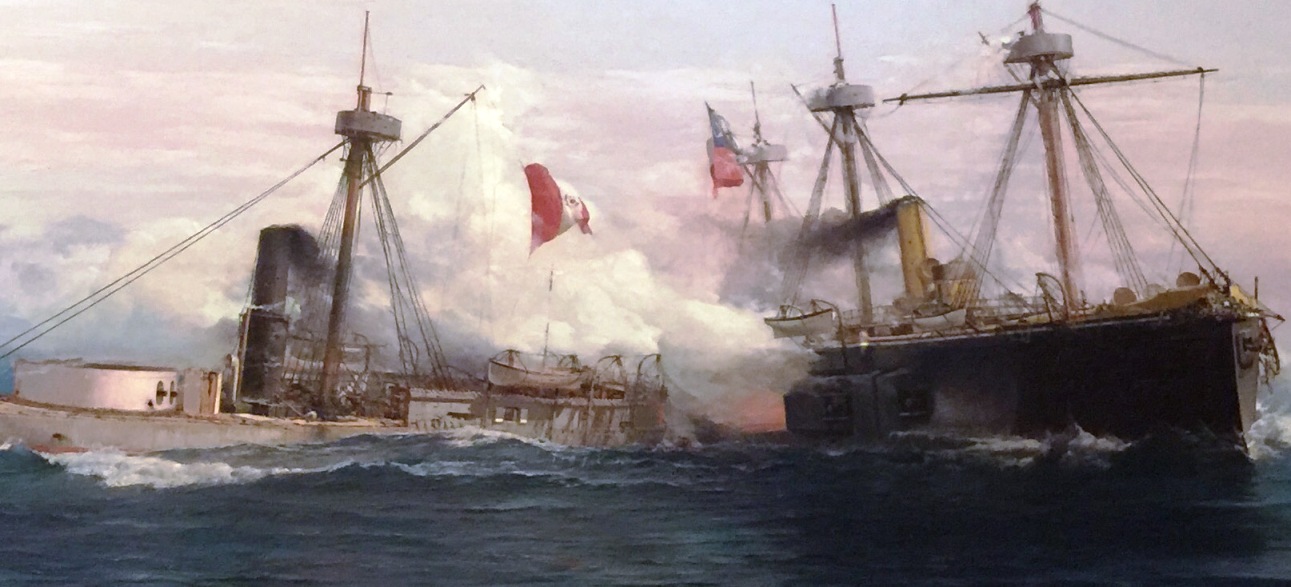
The Smaller
Peruvian Ironclad Huascar receives a raking fire from
the Chilean
Ironclad Frigate Almirante Cochrane at the Battle of Angamos,
1879.
Two years after the Huascar’s dance with the Royal Navy,
fertilizer again caused a war. Bolivia had allowed Chile to mine
nitrate-rich saltpetre in their territory. Against the terms of a
treaty signed between the two nations, Bolivia introduced a tax on
the miners. Chile protested and the diplomatic row escalated to
war. An ally of Bolivia, Peru tried to mediate the conflict but was
ultimately dragged into war against Chile.
Naval supply lines were critical to conduct a war against Bolivia,
and Chile quickly sought naval supremacy. In an effort to settle the
matter, Chile sailed its fleet to the major Peruvian port of Calleo
and engaged in a major sea battle. Chile left behind two older
wooden warships to blockade the smaller port of Iquique. On the
morning of May 21,1879 two plumes of smoke were spotted through the
morning fog off Iquique. Cutting through the mist were the bows of
the Huascar and its sister British-built ironclad, the
Independencia. An exchange of artillery fire immediately
commenced between the Huascar and the Chilean frigate
Esmeralda. Interestingly enough, barely a decade had passed
since the Esmeralda had fought alongside Peru and Chile
against the Spanish. Friend had become foe.
The Esmeralda was hit almost immediately with a round passing
through its hull, killing the surgeon and beheading his assistant.
The Esmeralda soon repositioned herself with the Peruvian
coastal town behind it. The Huascar’s crew hesitated to fire,
concerned that the rounds might hit civilians watching the battle on
the shore. Suddenly taking fire from the garrison troops in
Iquique, the Esmeralda pushed its
engines to adjust to the new threat from land. The move blew one of
its boilers leaving the Chilean ship limping along. Noticing the
Esmeralda had no torpedoes, and knowing its own iron was
impervious to the enemy’s artillery, the Huascar steamed in
for the kill.
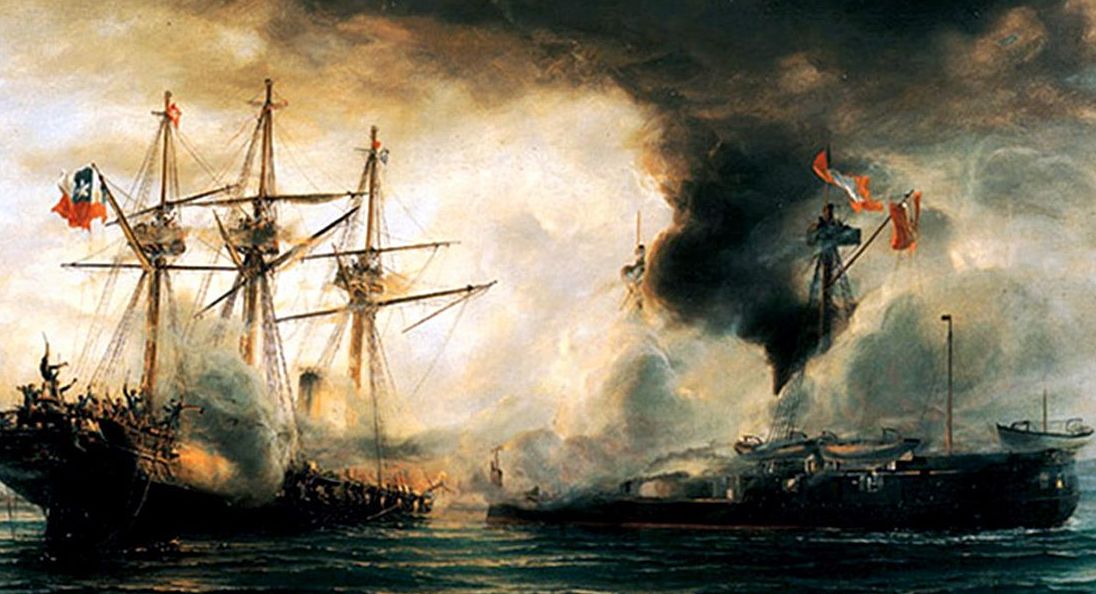
Black smoke rolling from its chimney, the
Peruvian Ironclad Huascar reaches ramming speed as it closes
on the Chilean Corvette, Esmeralda
As Huascar’s ram cut towards the Esmeralda, the
Chilean crew successfully maneuvered their crippled ship to minimize
the blow. The Huascar responded by unleashing a point-blank
volley from its massive Armstrong guns into the Esmeralda.
Dozens of Chilean sailors and marines were blasted into eternity.
Chaos and exchanges of small arms fire ensued. When the smoke
cleared, the Esmeralda’s captain was dead, and his body lain
on the deck of the Huascar.
Witnessing the Esmeralda ‘s desperate situation, Captain
Miguel Grau of the Huascar gave the remaining Chilean crew an
opportunity to surrender. Grau would become to be known as “the
Gentleman of the Seas” for his chivalrous conduct towards his
enemy. Unfortunately, the Chilean crew opted to respond to Grau’s
calls for surrender by nailing the flag of Chile to the
mizzen-mast. It was a statement that the Esmeralda would
never strike its colours and surrender.
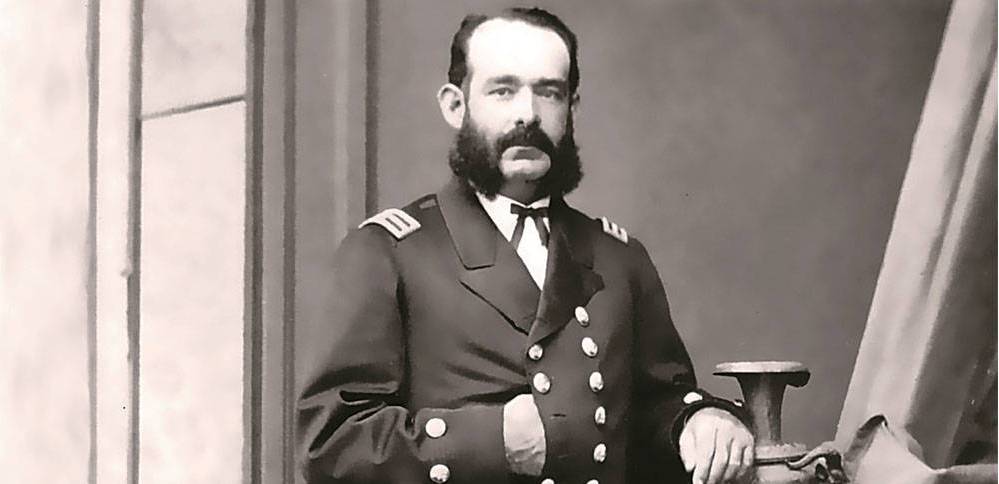
Respected by both
friend and foe for his honourable conduct, Admiral Miguel Grau became known
as "The Gentleman of the Seas".
Given little choice, Grau brought the Huascar to ramming
speed and charged again at the Esmeralda. This time the
Peruvian ironclad crashed through the starboard side of the Chilean
warship and water poured into her powder magazine and engines.
Again, the Huascar unleashed a volley from its mighty Armstrong guns
with lethal effect, destroying the Esmeralda officer’s mess
and partially clearing the deck of its crew. The Esmeralda’s
crew bravely jumped aboard the Huascar with machetes and rifles in a
vain attempt to seize victory from the ironclad jaws of defeat. The
Huascar’s gatling gun crew made short work of the Chilean
boarding party. Nobly the ironclad’s captain had the lone survivor
rushed to the Huascar’s infirmary.
Surprisingly, throughout this, the Esmeralda remained
afloat. Twenty-minutes later the Huascar rammed the Chilean
warship a third and final time right under the mizzen-mast. A last
defiant cannon shot was fired before the Esmeralda sunk into
a watery grave. The final part of the ship to disappear was the
Chilean flag nailed to the mast.
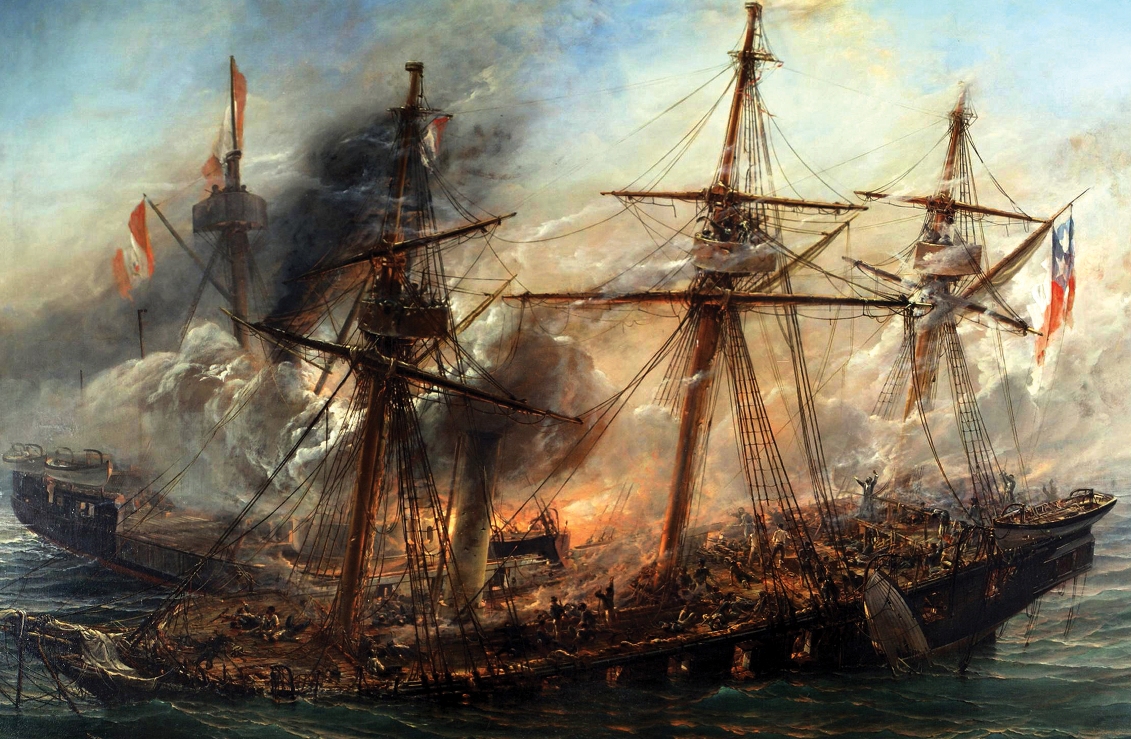
The Huascar
rams the sinking Esmeralda the third and final time.(Thomas
Somerscales)
Though exhausted the work of Huascar’s crew was not over.
The other Peruvian ironclad had ran aground exposing its stern and
could not bring its guns to bear. Another Chilean warship had
successfully positioned itself in close and turned the
Independencia into scrap metal. The Huascar steamed to
its rescue and chased the enemy vessel off.
While the Battle of Iquique was a great victory for the Huascar,
Chile still possessed a vastly superior navy, complete with more
modern ironclads and armaments. Capitan Grau, now an Admiral, turned
to guerilla tactics of striking fast and retreating. Like a ghost,
the Huascar played havoc on the Chilean supply lines by
attacking out of nowhere and then disappearing. These stings to
Chilean shipping became too much to bear. One contemporary wrote:
“the Chileans had bent all their energies on capturing the waspish
little ironclad, which had kept their coasts in a continual state of
terror.”
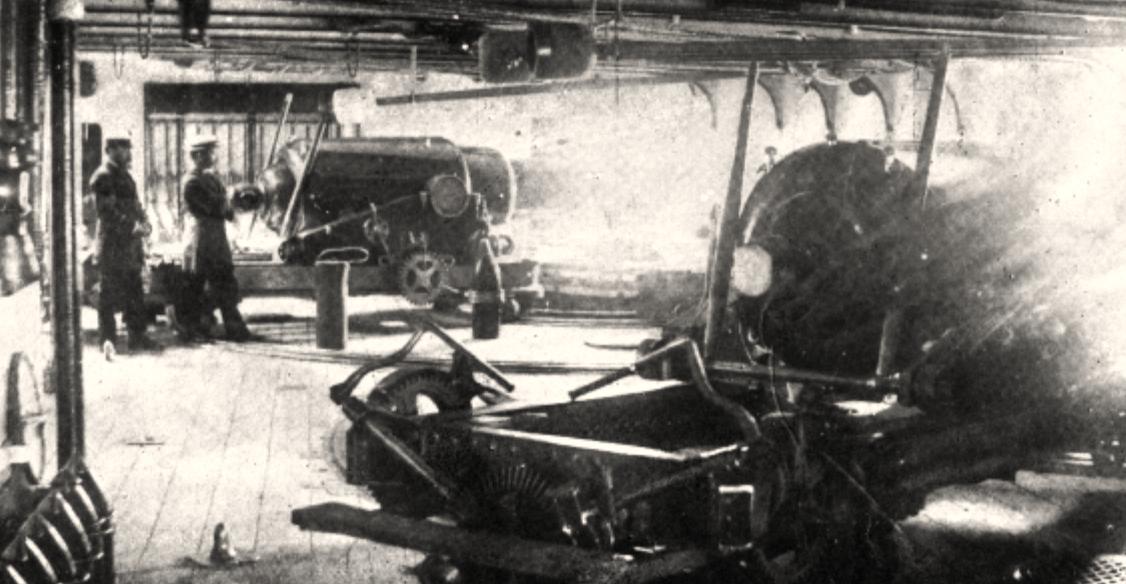
Deck of the
main four-gun battery of the British-built Chilean Ironclad Frigate
Almirante Cochrane.
After a long chase, the Chilean fleet of six warships including two
of the most powerful ironclad frigates in the Pacific finally
cornered the spirited Huascar on the morning of October 9,
1879. The world’s first pitched battle between sea-going ironclads
began with the Peruvian ironclad firing shots at the (also
British-built!) Chilean frigate Almirante Cochrane. As the
Chilean ship closed in, Admiral Grau had little choice but to use
the Huascar’s superior speed and try to run past the Chilean
fleet.
The Captain of the Almirante Cochrane held his fire until the
distance closed to a mile and a quarter. Loaded with new
armour-piercing rounds, the Chilean ironclad unleashed destruction
on the smaller Huascar. Positioned slightly to the stern of
its target, the shells of the Cochrane had an immediate
effect. The very first shot pierced the Peruvian gun turret injuring
the entire gun crew. Another round disabled the rudder and the crew
of the Huascar scrambled to regain control of their vessel.
Shortly after repairing the rudder, tragedy struck. A shell hit the
bridge cabin killing the noble Admiral Grau. Command of the
Huascar fell to Capitan Aguirre. The punishing bombardment
continued from the Cochrane. The Huascar’s stern was
on fire and the rudder wheel destroyed. The crew in the forecastle
were wiped out. Peruvian casualties were piling up.
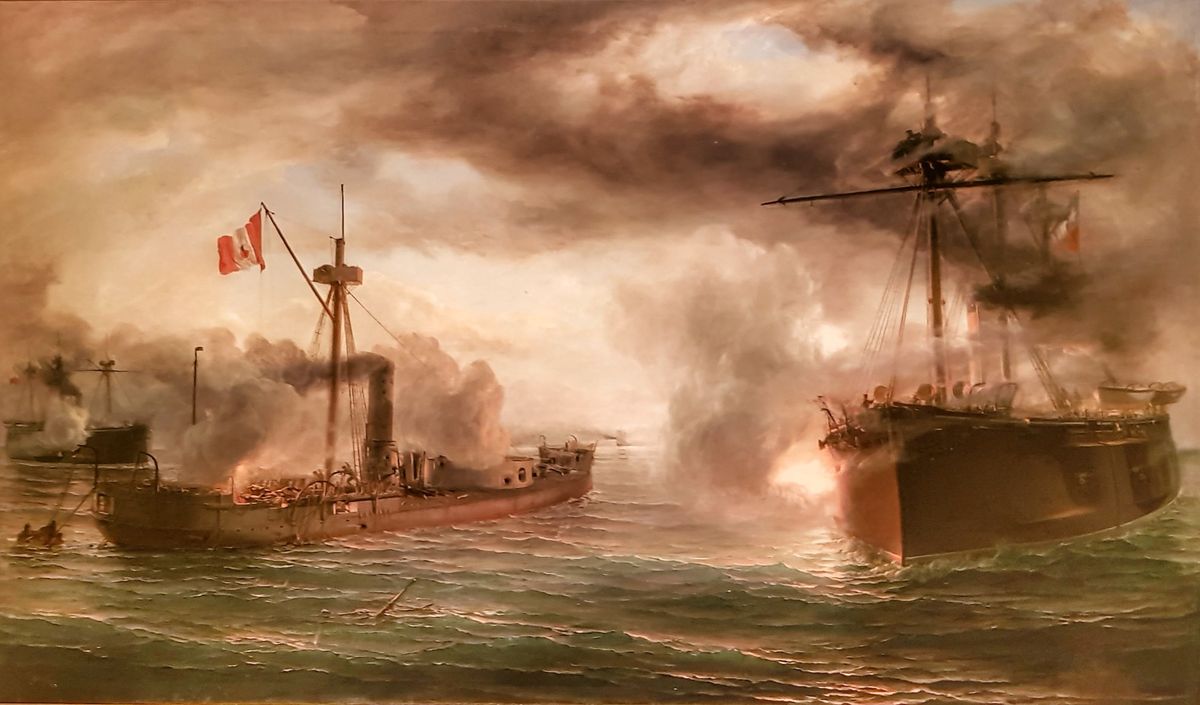 Two
Chilean
Ironclad Frigates pound away at the noble and defiant Huascar Two
Chilean
Ironclad Frigates pound away at the noble and defiant Huascar
When the Peruvian flag was knocked from its hoist, the Chileans
ceased firing thinking the Huascar had surrendered. But the
gallant Peruvian crew hoisted the flag again and the battle
continued. At this time, the Cochrane ‘s sister ship, the
Blanco Encalada joined the battle by firing a shell into the
Huascar’s turret, killing many of the crew and destroying one of the
guns. A round from the Cochrane smashed through the officer’s
quarters, again temporarily disabling the rudder.
Once steering control was again possible, Captain Aguirre, out of
desperation, tried to ram the Cochrane. Coincidentally the
captain of the Cochrane had the same idea but both ships
missed each other. Twelve minutes later, yet another shell pierced
the Huascar’s gun turret killing everyone inside, including the
captain. Rather than allowing it to be capture, the next in command
ordered the Huascar scuttled. Accordingly, the main valve
was opened, and the Peruvian ironclad began to take on water.
As the
Huascar slowed, the Chilean warships were able to come along
side and board her. There was no resistance. Of the 200 members of
Huascar’s crew, 78 were killed and another 30 were wounded.
The Chileans were able to close the valve and stop the ship from
sinking. In a fate similar to it’s Incan Emperor namesake, the
Huascar had been captured by its enemies.
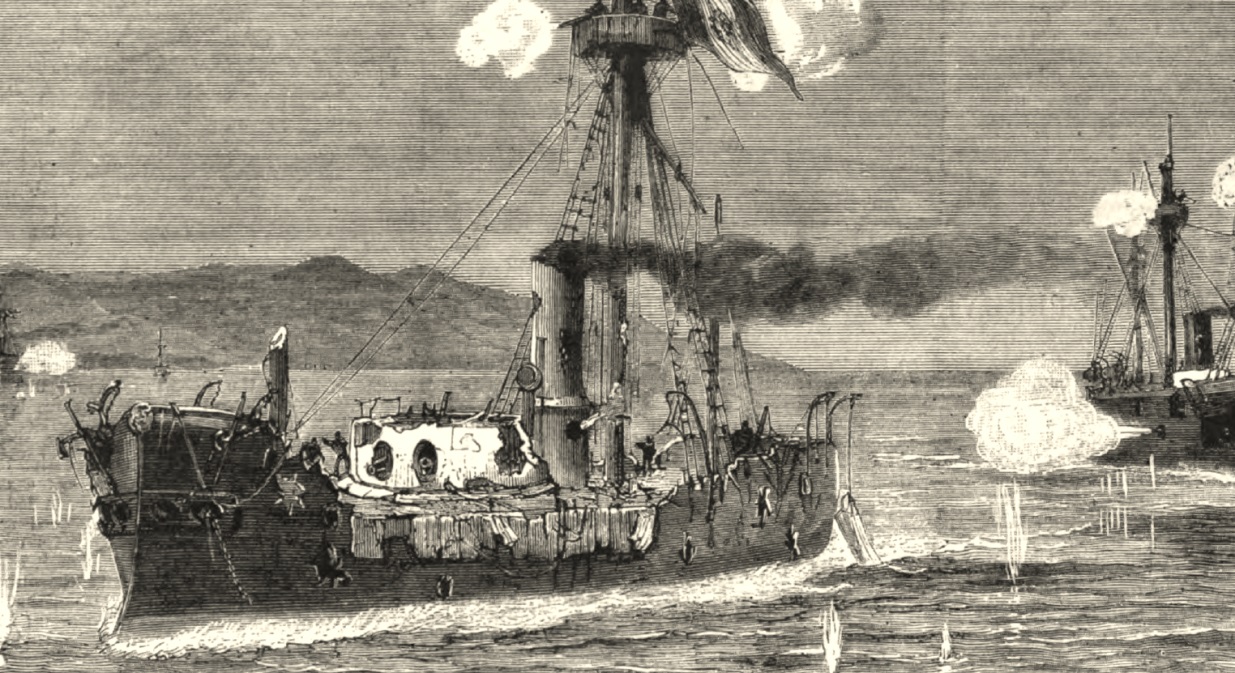
The extent on damage to the Ironclad Huascar.
Half her crew were killed or wounded.
As
a sign of respect, the captured ironclad was allowed to keep its
name. It was renewed and strengthened with new armaments and
engines. Nine years after the Esmeralda was sunk, the Huascar
returned under the Chilean flag to recover the bodies of its
crew. The Huascar continued to serve in the Chilean Navy into
the 20th Century, when it was converted into a
floating museum. Today the restored ironclad can be visited at
the port of Tacahuano, Chile. The Huascar continues to endure.
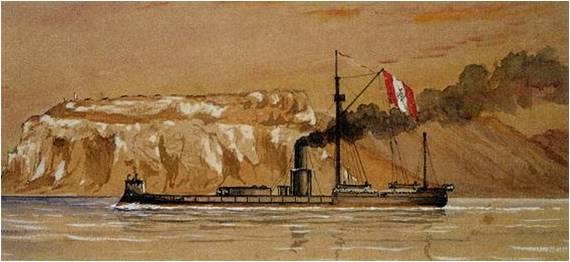
 |
Author
Robert Henderson enjoys unearthing and
telling stories of military valour, heritage, and sacrifice
from across the globe. Lest we forget.
|
|